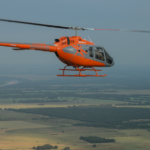
After signing the expected final UH-60 Black Hawk multi-year deal with the Army last year, Sikorsky’s [LMT] president said Monday he’s still “optimistic” about the potential for future production opportunities with the platform. Sikorsky President Paul Lemmo’s bullish outlook on Black Hawk arrives after the company lost the Army’s Future Long Range Assault Aircraft (FLRAA) modernization program and as the service is exploring buying up to 120 more UH-60Ms between 2028 and 2033. “The Army has stated pretty publicly that…

 By
By 











